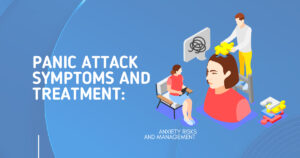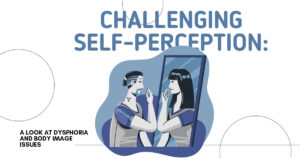“How does trauma therapy work?” is a common question for people who want to heal from traumatic experiences they’ve had. To feel safe in your life, you ultimately have to recover from past trauma, but the impact can be profound.
Forms of therapy for traumatic experiences delve into all of the effects so that someone can ultimately become “unstuck” from what they went through, and what they are going through.
What are the Effects of Trauma?
A traumatic experience is profoundly distressing and disturbing. You may fear for your life in these situations. It affects your ability to cope when you go through something traumatic, whether it’s a one-time event, such as rape or assault, or something ongoing, such as domestic violence, repeated sexual abuse, or growing up in a neglectful home. You may feel helpless or have a diminished sense of self well after the event or events occur or end.
You may feel like you cannot fully experience emotions and things in your life.
- Psychological trauma is your emotional response to something terrible.
- Immediately after the event, it’s common to experience feelings of shock and denial.
- Then, those feelings can develop into post-traumatic stress disorder.
- Often when traumatic experiences don’t have a resolution, the mental health condition post traumatic stress disorder (PTSD) develops.
- Symptoms can include flashbacks, unpredictable emotional responses, relationship problems, and physical symptoms such as pain.
When we experience a dangerous or threatening situation, it actives our fight-or-flight response, you’re having a physical and emotional response to a trigger.
- That hyperarousal changes our brains in some cases.
- Your amygdala in your brain can become overactive.
- You consistently feel like you’re on high alert.
- Your brain tells you that you’re in danger, even after the triggering situation passes.
It would be rare for anyone to go through their entire life without experiencing at least one traumatic event. However, how some people respond to it or move past the event can differ.
The types of traumatic events that can affect you include acute, chronic, or complex.
- Acute traumatic situations are one-time events such as the sudden death of someone you care about, car accidents, or sexual assault.
- Chronic trauma can occur in response to ongoing abuse, neglect, bullying, or violence.
- Complex trauma can occur when someone experiences repeated events they can’t escape. It could be, for example, an environmental threat that stems from growing up in a dangerous neighborhood.
A few specific types of trauma therapy may help someone who’s experienced any of the scenarios above.
Mental Health Center of San Diego
How Does Trauma Therapy Work?
Regardless of the specific type of therapy, the goals tend to be helping you process what happened to you. It can be intimidating to go through this, but it can help you be empowered in your life. Most types of therapy for traumatic exposure are forms of talk therapy. These types of treatment can help change how your brain works.
There’s a concept—neuroplasticity—which is key to understanding how trauma therapy works. Our brains are malleable. Our brains’ pathways change over time, and we have control over some of these changes. You can change your brain positively following traumatic exposure with the proper therapy and tools.
Treating traumatic experiences is complex, so a therapist should be specifically trained.
Specific goals of therapy according to mental health professionals may include:
- Helping someone successfully deal with the reality of what happened to them.
- Elimination of symptoms or reduction in these symptoms.
- Changing your focus from what happened in the past to the present.
- Improving your functionality in daily life.
- Regaining a sense of control and power.
- Combatting addiction and substance use that stems from traumatic stress.
- Helping develop coping skills to prevent relapse of mental health issues or addiction.
Types of Trauma Therapy
Mental Health Center of San Diego
Trauma-Focused Cognitive Behavioral Therapy (TFCBT)
Trauma-focused cognitive behavioral therapy is a subtype of cognitive-behavioral therapy (CBT). This type of CBT is explicitly adapted to individuals dealing with a traumatic experience, whether it occurred when they were a child or adults.
There are usually between eight and 25 therapy sessions. CBT, in general, has a set timeline for treatment, which is something many people like. However, at the end of therapy, a treatment provider could suggest that you continue in other ways to deal with secondary problems that might stem from how you’ve dealt with traumatic exposure and experiences.
TFCBT can be used in family settings and individuals, children, adolescents, and adults.
This type of trauma-informed therapy can occur in an outpatient office or mental health clinic setting, an in-home environment, or a community center or group home.
You work with a therapist trained in this technique to identify and then change harmful or distorted thought patterns, negative beliefs, reactions, and behaviors.
If it’s a family-based therapy approach, the therapist will look at the interactions and family dynamics that might contribute to the problems.
Eye Movement Desensitization and Reprocessing (EDMR) Therapy
Another well-studied therapy approach is Eye Movement Desensitization and Reprocessing (EMDR) therapy. This form of psychotherapy can help with recovery from traumatic life experiences and PTSD and depression, anxiety, and panic disorders.
In this effective treatment, the idea is that painful memories cause PTSD when you don’t completely process them. Then, certain things can trigger unprocessed memories, leading you to continue to experience them. That continual re-experiencing causes emotional distress or PTSD.
There are usually 6 to 12 sessions of EDMR, and it’s broken down into eight phases.
- First, in your initial therapy session, your therapist gets to know you and where you are in the process.
- From there, you work with a therapist to understand different techniques that could help you manage and cope with stress or uncomfortable feelings that you might experience during the course of treatment. This phase is resourcing. You could, for example, learn mindfulness or deep breathing exercises during this time.
- Next, in the third phase, your therapist will work with you to select a specific memory to target and aspects of that memory such as painful emotions or intrusive thoughts. This might be a memory stemming from childhood trauma or any other disturbing event that perhaps occurred in your life.
- During phases four through seven, you begin to use techniques of EMDR therapy. There’s desensitization where you might make specific eye movements. Then, you clear your mind and notice thoughts that spontaneously occur. From there, your therapist may have you refocus on traumatic or disturbing memories.
- Then, there’s an installation where you install a positive image or self-belief, and from there, you’ll learn to do a body scan to see if a targeted memory causes uncomfortable physical sensations to arise.
- Closure is a phase where you go over your progress at each session.
The eighth phase of EMDR is re-evaluation, where you might figure out you need to keep targeting the memories that are causing you distress or move on to other memories.
Mental Health Center of San Diego
Getting Trauma Therapy in San Diego, CA
There are other forms of therapy for traumatic experiences available, but the two above are often used. No matter the specific type of therapy, the key is to work with a therapist who understands trauma and its complexities. Unresolved traumatic situations often lead to mental illness and other complications that impact your quality of life in a wide range of ways.
If you’d like to learn more about therapy for trauma survivors, please contact the Mental Health Center of San Diego by calling (858) 258-9883.









